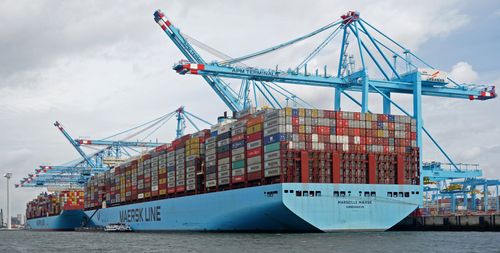The unsung innovation that made us richer (and some places poorer)
Oct 28, 2021 · 13 mins read
0
Share
Extraordinary inefficiency
Great innovations require an individual to make connections between things that no-one has made before. But once the innovation is out there, in hindsight they seem simple and obvious. We take them for granted.
Save
Share
Following is the story of how the world economy was transformed by one such innovation, unleashing a new age of prosperity and making us all richer.
Save
Share
For centuries, Marc Levinson explains in The Box: How the Shipping Container Made the World Smaller and the World Economy Bigger, when a cargo ship docked at a port, things were moved in boxes, barrels, crates and casks. They were hoisted by men with hooks, and cables and hoists.
Save
Share
Bars of copper, bunches of bananas, bags of coffee, logs of wood and sacks of cement - all had to be handled differently. Longshoreman or dock workers were frequently injured on the job, hit by moving cables or loads. There were few health and safety measures.
Save
Share
In the mid-1950s, 100,000 men worked in New York’s and London’s docks. In ports around the world like Marseilles, Antwerp, Portland, Fremantle, and Liverpool, tight knit communities lived within a mile or so of the docks, and divided up the work between them.
Save
Share
A lot of theft and pilfering went on. A big merchant ship might have 200,000 separate items, from cases to drums to crates, carrying a large variety of things, from wine to clothing to radios - all for the taking.
Save
Share
Sending a truckload of goods from the US to Europe involved freight and port costs equal to 20% to 25% of the product’s value. The main cost was not shipping itself, but getting the goods from land onto ships, and at the other end manhandling it from the ship onto waiting trains
Save
Share
Everyone could see that shipping was inefficient and costly, and from the 1920s on there were efforts to introduce metal or wooden containers to streamline the movement of goods. But these containers were small and usually just had a canvas covering. Unloading was not made much e
Save
Share
One day, while waiting in a traffic jam to load goods from his truck onto a ship, American truck company owner Malcom McLean had a flash of inspiration.
Save
Share
In 1954, McLean’s company was running a fleet of over 600 trucks. With increasing congestion on the roads, he thought it made more sense to ship goods by water up and down the East Coast. But trucking companies ran trucks, and shipping companies ran ships.
Save
Share
0
